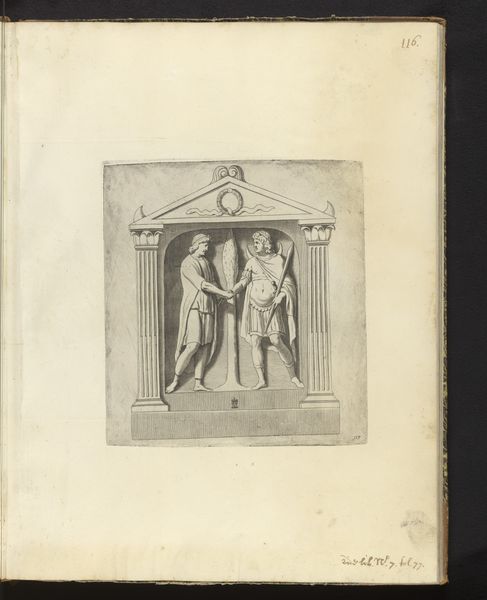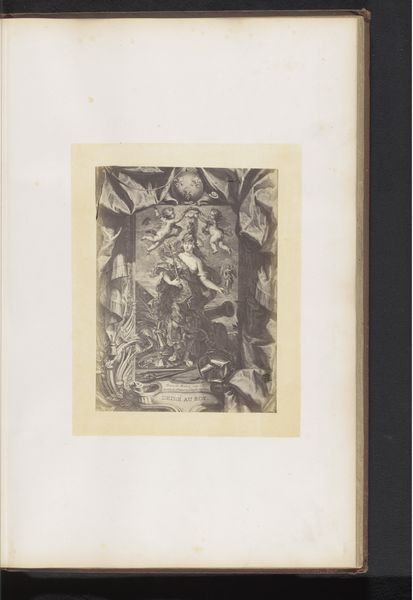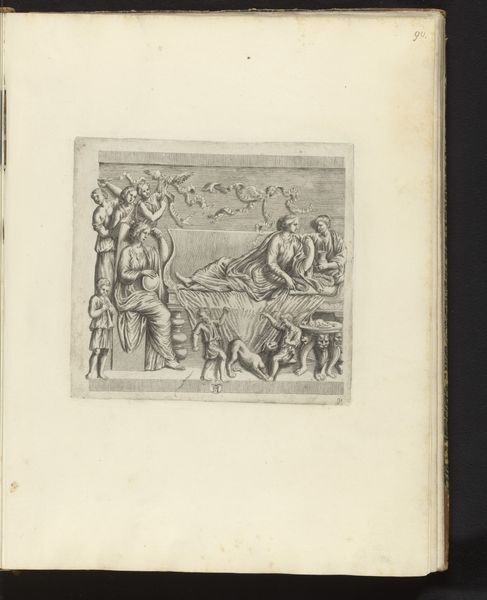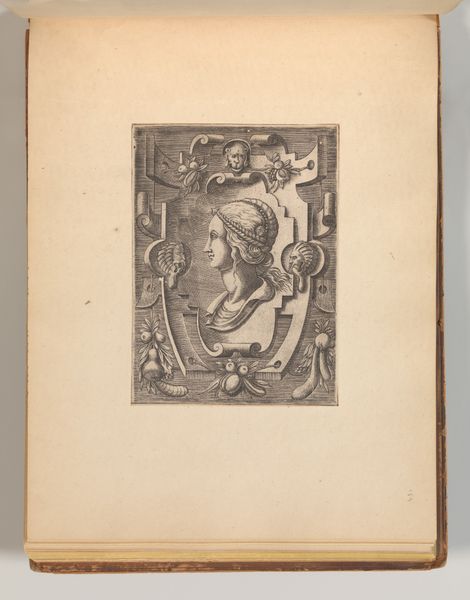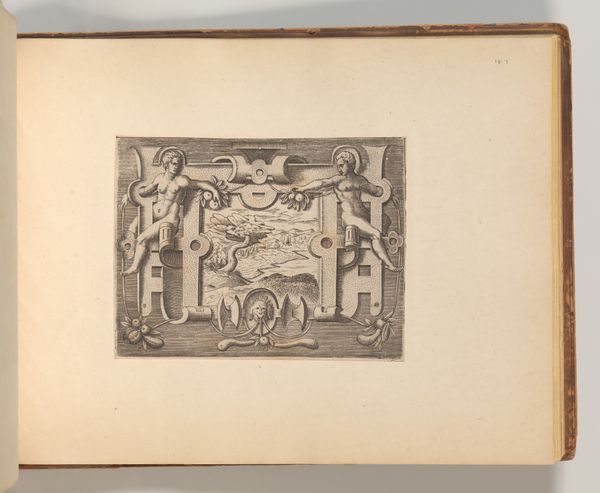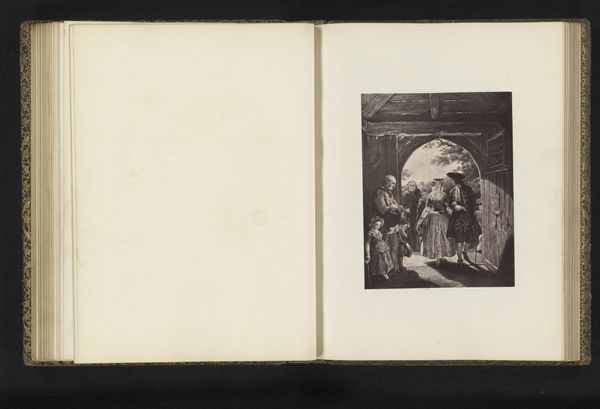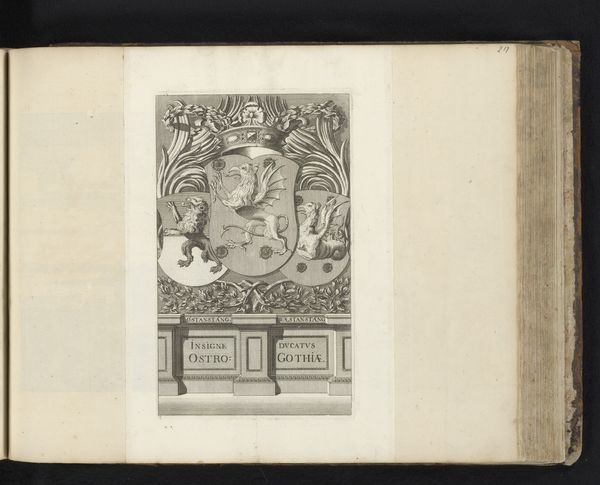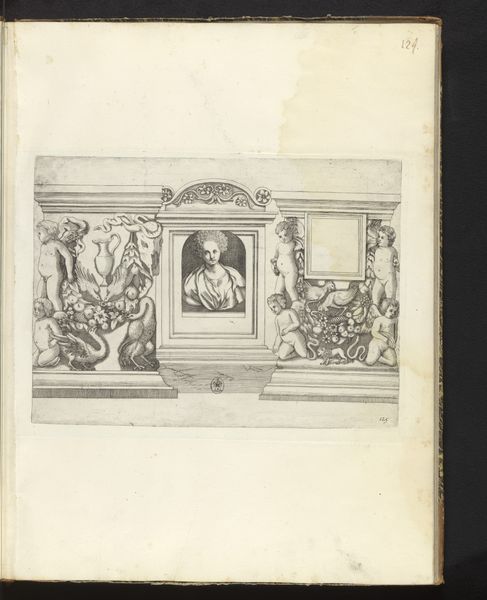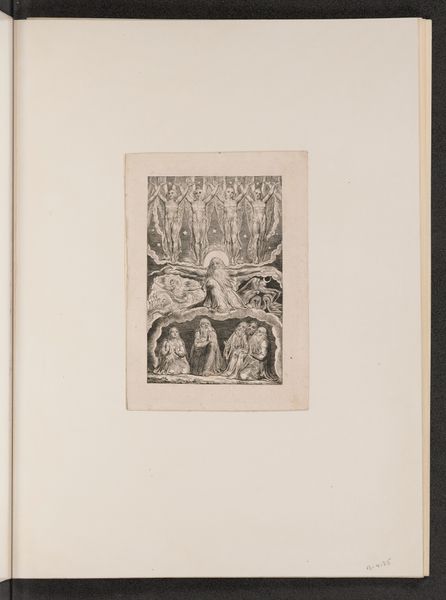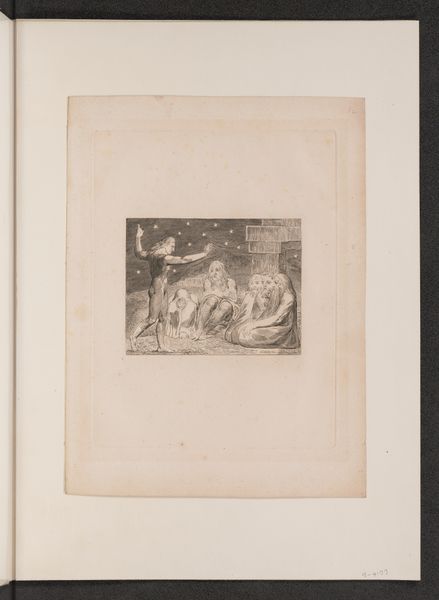
drawing, print, metal, engraving
#
portrait
#
drawing
#
baroque
# print
#
metal
#
figuration
#
history-painting
#
engraving
Dimensions: height 222 mm, width 238 mm
Copyright: Rijks Museum: Open Domain
Curator: This engraving is entitled "Bas-reliëf met portret van echtpaar en engelen," made between 1636 and 1647 by Pieter de Bailliu. It's currently housed here at the Rijksmuseum. My initial response is…austere. Editor: Austere? It strikes me as rather sentimental, really. The couple are framed by angels—they're idealized, elevated almost to sainthood, even in death perhaps? Curator: Possibly, but look closely at the medium itself. The precision of the engraving, the meticulous lines used to create the bas-relief effect—the work demands intense labor, a certain societal expectation for this level of craftsmanship and for what purpose was this made. Editor: Well, considering its context in the 17th century, and its style categorized as Baroque, wouldn't this elaborate aesthetic serve the function of portraying social status and moral virtue within marital unions? Consider also the societal structure around the production of art itself—who could afford to commission such a work, what messages about power dynamics are subtly woven in? Curator: That's an astute observation, and if we look more deeply, one may appreciate the use of metal for this kind of reproductive printmaking, allowing the artist to disseminate the message contained inside across multiple networks of social and political groups, in effect building their reputation. It reminds us art is an integral commodity of social life. Editor: I agree; considering portraiture specifically, during this period, its accessibility grew, widening the visibility for rising social classes while preserving historical narratives, particularly those associated with specific cultural or philosophical viewpoints regarding how partnerships influence legacy. Curator: Precisely! What seems at first an individual expression is interwoven in economic exchange and distribution of power, mediated through this metal plate. Editor: The social implications around the creation and sharing of this image really highlight our shifting values regarding intimacy, public image, and remembrance across time. Curator: Absolutely. Examining production brings invaluable understanding of societal currents, which is clearly shown in this seemingly private commemoration. Editor: And studying its cultural role prompts insights into shared understandings regarding gender roles and societal influence as displayed through the lens of that era.
Comments
No comments
Be the first to comment and join the conversation on the ultimate creative platform.
